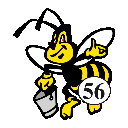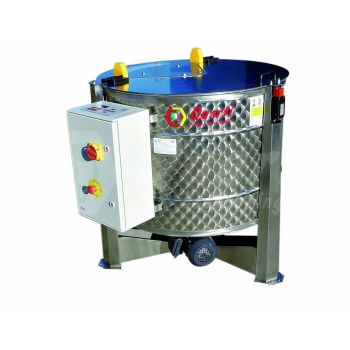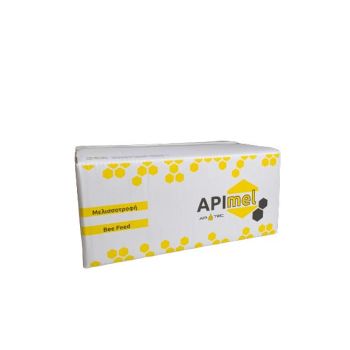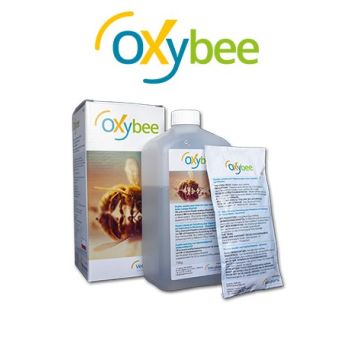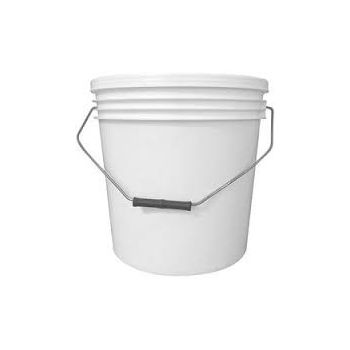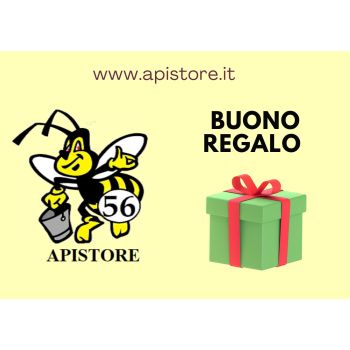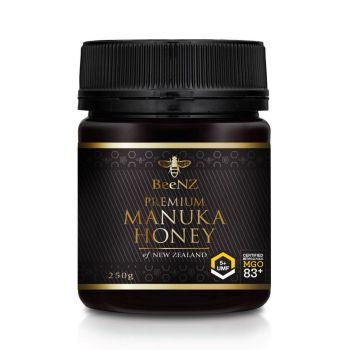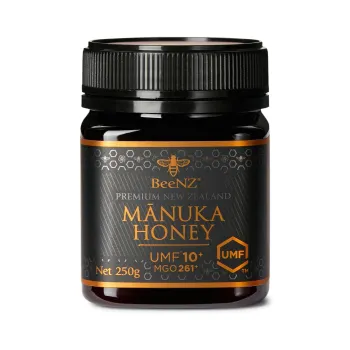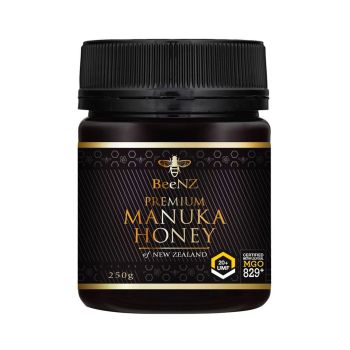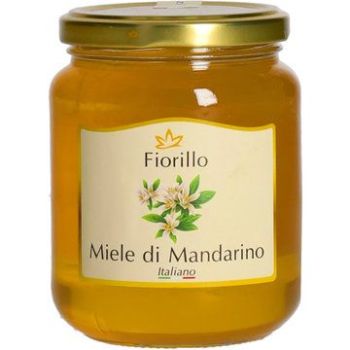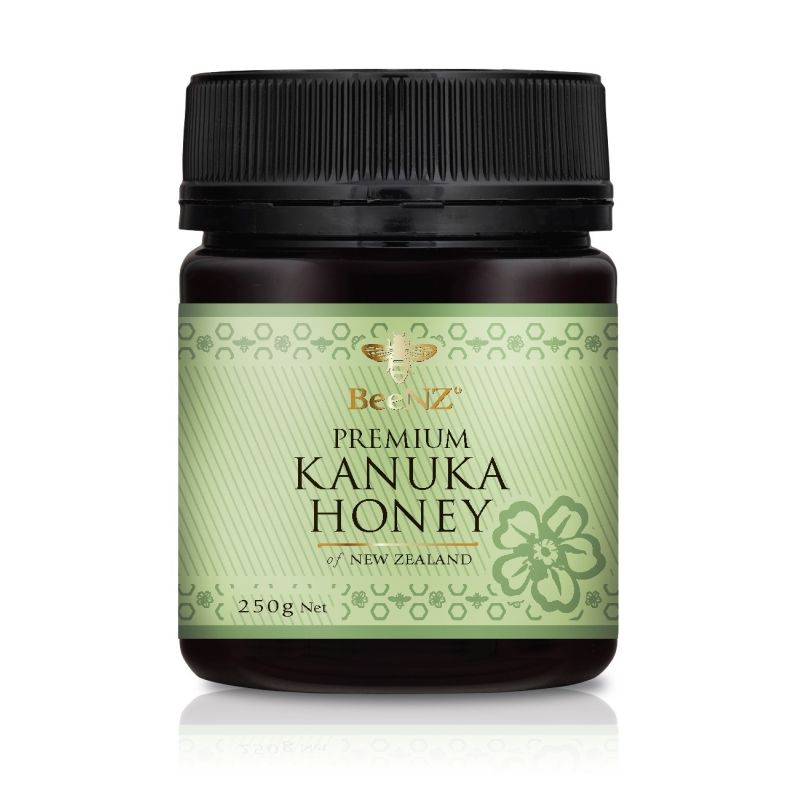

KANUKA HONEY (Kunzea ericoides)
Jar 250 g
MADE IN NEW ZEALAND
Kanuka honey is a very pure honey with a soft texture, light color and delicate, aromatic and floral flavor.
Although similar in name and tree appearance, Kanuka honey is very different from its close relative, Manuka honey. The Kanuka tree (Kunzea ericoides) is native to New Zealand and can be found growing in wetlands, coastal areas and lowland forest areas.
Properties:
- This honey has beneficial properties for the body related to the detoxifying and antimicrobial action that the Kanuka plant has.
- Topically Kanuka has a proven action in skin care and can be useful in the management of acne, rosacea and cold sores.
Usage tips:
It can be dissolved in your favorite drinks for breakfast or savoured directly from the jar to enjoy the delicate aroma of this fantastic honey.
Manuka UMF® honey from New Zealand has become one of the most sought-after floral honeys, recognized internationally for its unique antimicrobial properties.Manuka honey is indeed unique in that it contains antimicrobial compounds that are not found in any other floral honey. This uniqueness has led to the development of a testing regimen to certify the concentration of these compounds known as the "unique manuka factor" or UMF®.The company BeeNZ LTD produces UMF-certified New Zealand manuka honey, which is the certification that guarantees the three key elements for the antibacterial action of manuka honey. These elements are:- DHA (didroxyacetone) which is a substance found in the manuka flower; the bee going on this flower transfers this compound into the honey, which through enzymes produced by the bee will be naturally transformed into MGO (methylglyoxal).- the content of MGO expressed in myriagrams per kg (mg/kg) of methylglyoxal, with a minimum of 83 mg/kg up to a maximum of 829 mg/kg. the minimum content of LEPTOSINE which simply translated is the pollen exclusive to the MANUKA flower which must be a minimum of 70% of the total in the jar. This began in the late 1980s when a range of floral honeys began to be tested in laboratories at the University of Waikato in New Zealand and it was discovered that honey derived from Manuka plant species had remarkable antimicrobial properties.It was shown that while all honey contained an enzyme called glucose oxidase that itself has an antimicrobial effect when glucose oxidase releases hydrogen peroxide in the presence of body serum, however, Manuka honey had something extra that when glucose oxidase was removed it still had potent antimicrobial properties.This factor was described as non-peroxide activity, later known as "unique manuka factor" or UMF®.It was not until many years later that the compound responsible for this unique antimicrobial factor was identified as methylglyoxal.While it was known that nectar harvested from the Manuka species produced honey containing methylglyoxal, it was also discovered that there was wide variation in the concentration of methylglyoxal in samples of Manuka honey from different regions, seasons, and density of Manuka plants in a given location. Once methylglyoxal was identified as the main compound contributing to the antimicrobial level of Manuka honey, questions remained about its source since it was not present in the nectar of Manuka flowers.The research continued and it was shown that the methylglyoxal in Manuka honey from New Zealand came from the chemical compound dihydroxyacetone (DHA). When Manuka honey is produced fresh by bees, it contains high levels of dihydroxyacetone and low levels of methylglyoxal, this gradually reverses as naturally occurring proteins and amino acids gradually convert dihydroxyacetone to methylglyoxal.It was therefore necessary to create a measurement and certification system to quantify the antimicrobial efficacy of Manuka honey thus developing the measurement of this honey, known as the "unique manuka factor" or UMF®. The method used is to compare individual honey samples in a colony of bacteria with a known concentration of phenol, a common antiseptic used in the medical industry. By comparing the antimicrobial efficacy of Manuka honey samples with a concentration of phenol, Manuka honey has a classification that guarantees its efficacy. For example, a Manuka honey sample that had the same antimicrobial effect as a 15% phenol concentration is certified as UMF® 15+.Manuka UMF honey in which a higher index of UMF®10 is detected is considered active, but laboratory studies have shown that Manuka honey having non-peroxide activity levels of UMF® 15, UMF® 20 or higher is indeed active on a wide range of bacteria.Several international studies have demonstrated the active action of Manuka UMF® honey in combating bacterial strains. Manuka UMF® honey is an extraordinary product, its unique value stemming from the presence of compounds such as hydrogen peroxide, the high level of methylglyoxal expressed in terms of UMF®, along with antioxidants, polyphenols, phenolic acids, flavonoids and bee substances, all of which are vital to our health.
